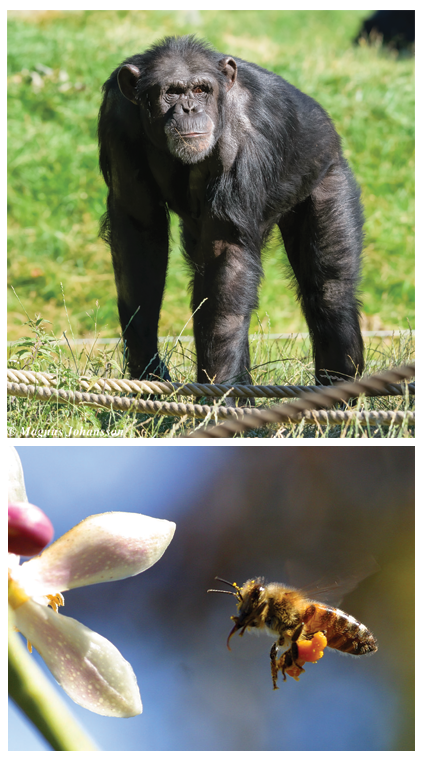
Tuesday, March 31, 2020 - Many people in countries hardest hit by the coronavirus pandemic are struggling to avoid contact with others and stay at home, including millions of Americans ordered by authorities to shelter in place to slow the spread of COVID-19.
But social distancing is not a novel  concept in the natural world, where infectious diseases are commonplace. In fact, several social species will expel members within their own community if they are infected with a pathogen.
concept in the natural world, where infectious diseases are commonplace. In fact, several social species will expel members within their own community if they are infected with a pathogen.
It’s challenging because infectious individuals are not always “easy to see,” explains Joseph Kiesecker, a lead scientist at The Nature Conservancy.
However, through specialized senses animals can detect certain diseases—sometimes before visible symptoms appear—and change their behavior to avoid getting ill. Honeybees and chimpanzees, for instance, can be ruthless when it comes to ousting the sick.
Bacterial diseases that strike honeybee colonies, like American foulbrood, are particularly devastating, liquifying honeybee larvae from the inside. “That’s where the name comes from, that brown gooey mess. It smells very, very foul,” explains Alison McAfee, a postdoctoral fellow with North Carolina State University’s Entomology and Plant Pathology department.
Infected larvae emit certain telltale chemicals that older bees can smell, like oleic acid and β-ocimene, a bee pheromone, according to McAfee’s research. Once identified, the bees will physically toss these diseased members from the hive, she says.
Since this evolutionary adaptation safeguards the health of a colony, beekeepers and researchers have selectively bred for this behavior for decades. These more “hygienic” bees now buzz across the U.S.
In 1966, while studying chimpanzees in Gombe Stream National Park, Tanzania, Jane Goodall observed a chimpanzee named McGregor who had contracted polio, caused by a highly contagious virus. His fellow chimps attacked him and cast him out of the troop. In one instance, the partially paralyzed chimp approached chimps grooming in a tree; starved of social contact, he reached out a hand in greeting, but the others moved away without a backward glance.
Goodall recorded other instances of ostracized, polio-ridden chimps during her research, though noted that in some cases, infected individuals were eventually welcomed back into the group.
Like humans, chimps are visual creatures, and some research suggests that the initial stigma toward polio-infected chimps may be driven by fear and disgust of their disfigurement—which is itself part of the strategy for avoiding catching the disease that causes such deformations.
Not all animals are so aggressive toward their ailing neighbors; sometimes it’s as simple as avoiding those who may infect you.
Before Kiesecker started studying American bullfrog tadpoles in the late 1990s, models predicting the spread of disease within wildlife groups assumed that contact with infected individuals was random. “But it’s clear animals are smarter,” says Kiesecker.
In his experiments, Kiesecker found that tadpoles could not only detect a deadly yeast infection in other tadpoles, but healthy members actively avoided those that were sick. Much like honeybees, tadpoles rely on chemicals signals to determine who is sick or not.
Learn More Here